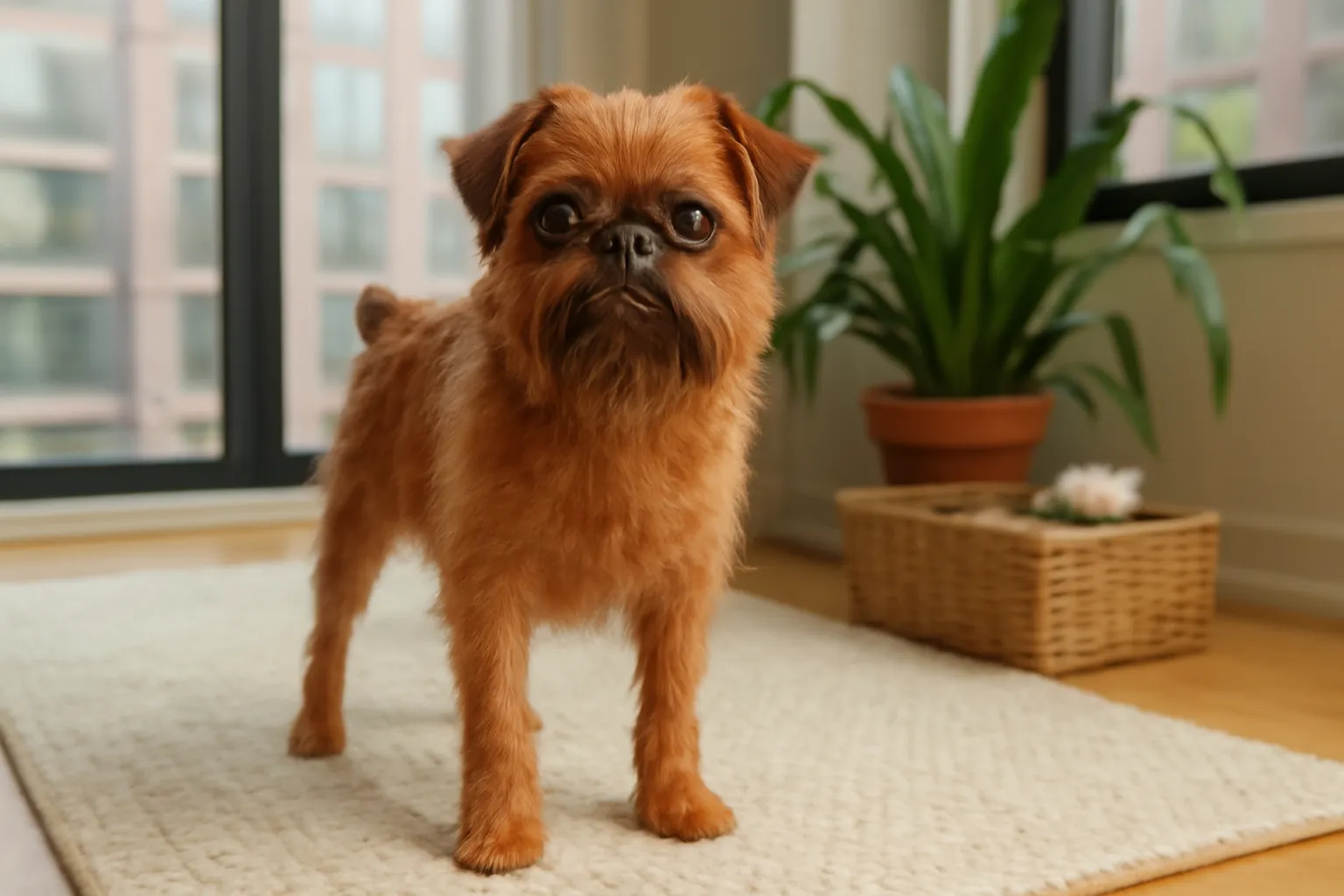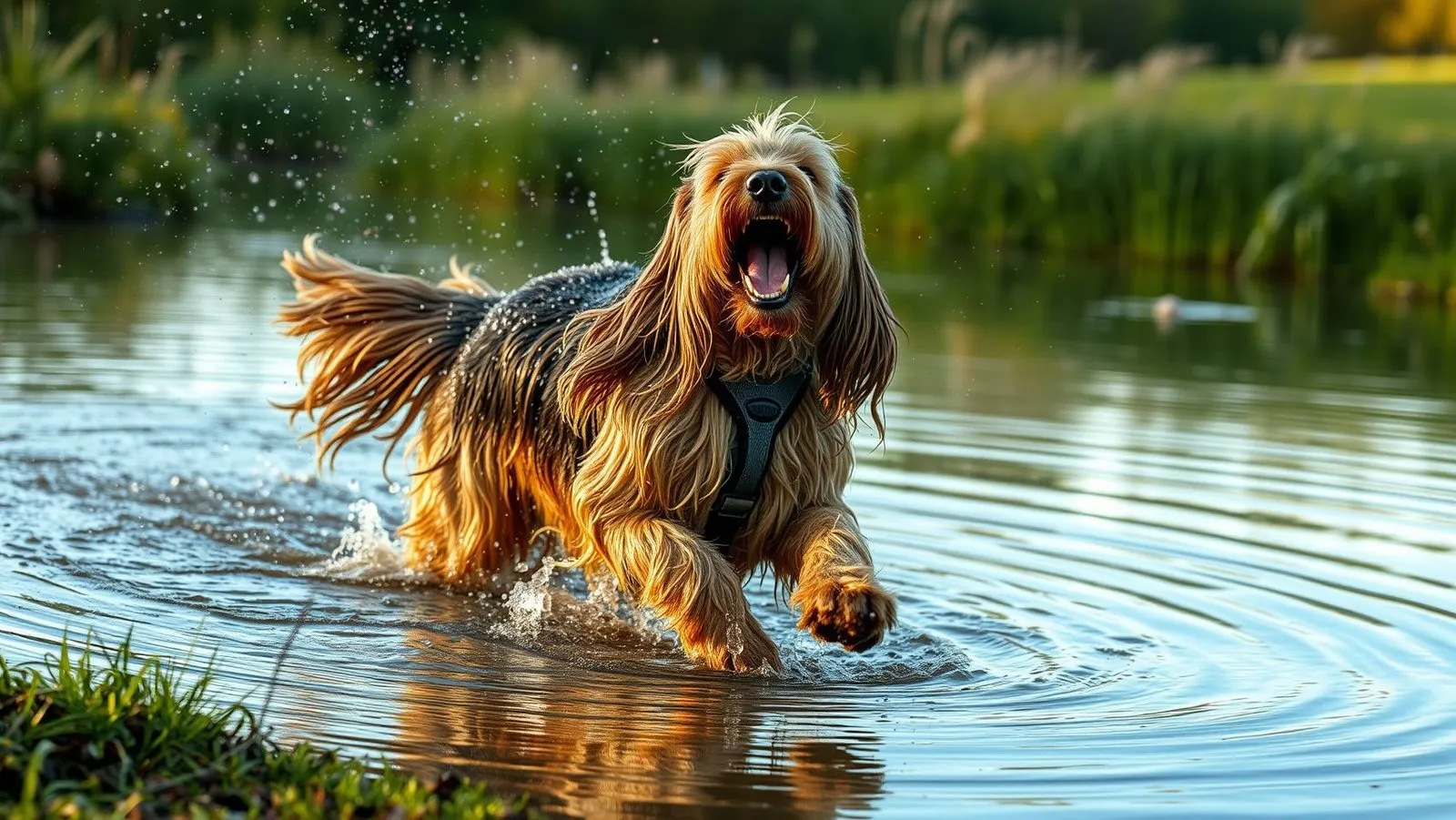How to Blend Dog Training Basics with Positive Rewards

Table of Contents
Introduction
Did you know that dogs trained with positive reinforcement methods are 3 times more likely to retain commands long-term than those trained with punishment-based techniques? Despite this compelling statistic, over 60% of dog owners still rely on outdated training approaches that can damage their relationship with their pets. Understanding dog training basics goes beyond teaching your furry friend to sit or stay—it’s about creating a communication system built on trust and mutual understanding. By blending fundamental dog training basics with positive rewards, you can transform your dog’s behavior while strengthening your bond in ways you never thought possible.
Required Supplies List
Before diving into training, gathering the right tools will set you up for success. Here’s what you’ll need to effectively implement positive reinforcement with dog training basics:
- High-value treats: Small, soft, and aromatic treats your dog finds irresistible (like small pieces of chicken, cheese, or commercial training treats)
- Treat pouch: A hands-free option that attaches to your waist for quick reward access
- Clicker: An optional but highly effective marking tool that precisely signals correct behavior
- 6-foot leash: A standard length for training walks and controlled practice sessions
- Long-line (15-30 feet): For distance training and recall practice in open areas
- Training toys: Interactive options like a tug rope or favorite squeaky toy as non-food rewards
- Target stick: Helps with teaching precise positions and movements
- Baby gates or exercise pen: For controlling training environments when needed
Budget-friendly alternatives: Use a regular fanny pack instead of a specific treat pouch, make a verbal marker sound instead of a clicker (“yes!” or “good!”), and use regular kibble mixed with a few high-value treats to extend your supply.
Time Commitment
Effective positive reinforcement training requires consistency rather than marathon sessions. Commit to 3-4 training sessions daily, each lasting just 5-10 minutes—research shows these shorter, frequent sessions are 40% more effective than single extended sessions. Plan for a total of 20-30 minutes per day, broken up throughout your daily routine. Most dogs show noticeable improvement in basic commands within 2-3 weeks with this schedule, though full reliability takes 2-3 months of consistent practice. Remember that reinforcement of dog training basics should continue throughout your dog’s life, becoming part of your everyday interactions.
Step-by-Step Instructions
Step 1: Establish a Reward System
Begin by identifying what truly motivates your dog. While most dogs respond well to food rewards, some prefer praise, play, or physical affection. Experiment with different treat types and reward methods to discover what makes your dog’s eyes light up. Whatever reward you choose, ensure it’s delivered immediately after the desired behavior—timing is crucial in connecting the action to the reward. For food-motivated dogs, use tiny, pea-sized treats to avoid overfeeding during multiple training repetitions.
Pro tip: Reserve special “jackpot” treats (extra delicious or larger portions) for breakthroughs or particularly challenging behaviors to create an additional level of motivation.
Step 2: Master the Marking Signal
A marking signal tells your dog precisely which behavior earned the reward. This could be a clicker sound, a verbal marker like “yes!” or even a visual signal for deaf dogs. To establish your marker:
- Click/say your marker word, then immediately give a treat
- Repeat 15-20 times in several short sessions
- Test by waiting for your dog to offer a random behavior (like looking at you), mark it, and reward
- If your dog immediately looks expectant after hearing the marker, it’s working!
This foundation is crucial for all future dog training basics, as it creates clear communication between you and your dog.
Step 3: Shape Basic Commands
Start with simple commands like “sit” and gradually build to more complex behaviors. For teaching “sit”:
- Hold a treat close to your dog’s nose
- Move the treat slowly up and back over their head
- As your dog’s nose follows the treat, their bottom will naturally lower
- The moment their bottom touches the floor, mark with your clicker/word and reward
- After several successful repetitions, add the verbal cue “sit” just before the physical prompt
- Gradually fade out the physical prompt (luring motion) until your dog responds to the verbal cue alone
For each command, progress through these phases: lure (physical guidance), verbal cue with lure, verbal cue alone, adding duration, adding distractions, and adding distance.
Step 4: Implement the 3D Method
The 3D Method—Duration, Distance, and Distraction—transforms basic compliance into reliable obedience:
- Duration: Once your dog responds to a command, gradually increase how long they must hold the position before receiving the reward (start with 2 seconds, progress to 30+ seconds)
- Distance: Incrementally increase the space between you and your dog while maintaining the command (begin with 1 step away, build to 10+ feet)
- Distraction: Systematically introduce low-level distractions during training, slowly working up to more challenging environments
Only increase one dimension at a time—don’t ask for longer duration AND greater distance in the same training session until each has been mastered separately.
Step 5: Utilize Variable Reinforcement
As your dog becomes proficient with dog training basics, transition from continuous reinforcement (rewarding every correct response) to variable reinforcement (rewarding unpredictably). Start by rewarding every other correct response, then every third, then randomly. This creates a “gambling effect” that makes the behavior more resistant to extinction, as your dog never knows when the next reward might come.
Research shows that behaviors reinforced on a variable schedule are maintained up to 4 times longer than those reinforced continuously. However, always return to continuous reinforcement when teaching new behaviors or when your dog seems confused.
Health Benefits
Positive reinforcement training offers substantial health advantages for your canine companion:
BenefitDescriptionSupporting DataReduced StressLower cortisol levels compared to dogs trained with punishment-based methodsStudies show 43% lower stress hormone levels in positively trained dogsImproved Mental StimulationTraining sessions provide cognitive challenges that prevent boredom and related behaviorsDogs receiving regular training show 30% fewer destructive behaviorsEnhanced Physical HealthTraining incorporates movement and exerciseDogs engaged in regular training sessions maintain healthier weightsStrengthened Immune SystemLower stress leads to better immune functionResearch indicates 25% fewer stress-related illnesses in positively trained dogsBetter Sleep QualityMental stimulation and proper exercise improve restDogs with consistent training routines sleep an average of 10% more deeplyDecreased AnxietyClear communication reduces uncertainty65% reduction in anxiety behaviors when dogs understand expectations through positive training
Beyond these measurable benefits, positive training methods enhance your dog’s confidence and problem-solving abilities, creating a happier, more balanced pet.
Adaptations for Different Dogs
Every dog is unique, requiring thoughtful adaptations to basic training methods:
For Senior Dogs:
- Use higher-value rewards to overcome sensory decline
- Incorporate shorter sessions (3-5 minutes) to prevent fatigue
- Provide supportive surfaces for commands requiring position changes
- Focus on mental enrichment over physical challenges
For Puppies:
- Keep sessions extremely short (1-3 minutes) but more frequent (6-8 times daily)
- Focus on socialization alongside basic commands
- Use play-based rewards to maintain engagement
- Set realistic expectations—aim for exposure rather than perfection
For Reactive or Anxious Dogs:
- Train in ultra-low-distraction environments initially
- Use a higher rate of reinforcement (more frequent rewards)
- Incorporate calming protocols between training exercises
- Consider counterconditioning techniques to address specific triggers
For High-Energy Breeds:
- Begin sessions with brief exercise to take the edge off
- Incorporate movement into training (commands while walking)
- Use training games that allow physical expression while learning
- Consider scent work or agility elements to channel natural drives
For Brachycephalic Breeds (Flat-Faced Dogs):
- Choose rewards that don’t require intensive chewing
- Be mindful of overexertion and provide cooling breaks
- Focus on behaviors that don’t strain breathing
The core dog training basics remain consistent across all dogs, but these modifications ensure every canine can succeed regardless of their unique characteristics.
Implementation Suggestions
Transform standard training routines into engaging experiences with these creative approaches:
Training Through Daily Activities:
- Practice “wait” at doorways before entering/exiting
- Use “leave it” during meal preparations when food might drop
- Incorporate “sit” and “stay” before placing food bowls down
- Practice recalls throughout the day for random pleasant surprises
- Use “place” command during family meals or when visitors arrive
Game-Based Learning:
- “Find it” games to reinforce name recognition and coming when called
- “Hot and cold” using your voice tone to guide your dog to hidden treats
- “Red light, green light” for reinforcing stay and come commands
- “Target touch” games for teaching body awareness and positioning
Environmental Integration:
- Set up mini obstacle courses in your living room using household items
- Create “station training” spots throughout your home for practicing place commands
- Designate specific areas for different behaviors (relaxation spot vs. play zone)
- Practice real-world applications in progressively challenging environments
Social Learning Opportunities:
- Arrange “parallel play” sessions with well-trained dogs
- Organize small playgroups where dogs can practice commands around distractions
- Attend group classes for socialization while reinforcing dog training basics
Remember that consistency across household members is crucial—create a simple “command chart” with agreed-upon words and hand signals to ensure everyone communicates consistently with your dog.
Common Mistakes to Avoid
Even well-intentioned owners can undermine their training efforts. Here are the pitfalls to watch for:
- Inconsistent Cues: Using different words or signals for the same command creates confusion. Data shows dogs take 40% longer to learn commands when cues vary between family members.
- Inadvertent Reinforcement: Accidentally rewarding undesired behaviors (like giving attention to jumping) perpetuates problems. Nearly 65% of behavior issues stem from unintentional reinforcement.
- Punishment After Delayed Response: Correcting your dog when they finally come to you after being called repeatedly teaches them that coming to you leads to negative consequences.
- Training Sessions That Are Too Long: Sessions exceeding 10-15 minutes typically show a 30% decline in effectiveness as dogs lose interest and become mentally fatigued.
- Skipping Proofing Steps: Expecting perfect performance in distracting environments without gradual exposure leads to frustration. Masters of dog training basics know that behaviors need to be “proofed” in varied settings.
- Phasing Out Rewards Too Quickly: Eliminating rewards before behaviors are fully established results in regression. Research indicates behaviors should be rewarded at least 80% of the time until fully reliable.
- Emotional Training: Training when frustrated or angry reduces success rates by approximately 50% and damages trust in the human-canine relationship.
- Inconsistent Expectations: Allowing jumping sometimes but not others creates confusion about rules. Dogs thrive with clear, consistent boundaries.
Awareness of these common errors allows you to avoid them, making your positive reinforcement journey much more effective.
Consistency and Maintenance Tips
Maintaining training progress requires ongoing attention long after initial learning:
Daily Practice Integration:
- Incorporate mini-training moments throughout your daily routine
- Use life rewards (things your dog naturally wants) as ongoing reinforcement
- Practice commands for 30 seconds before all pleasant activities (meals, walks, play)
Refresher Sessions:
- Schedule weekly 5-minute “maintenance” sessions for previously mastered skills
- Return to basics periodically, especially after major life changes or extended breaks
- When a command begins to weaken, temporarily increase reinforcement frequency
Progress Tracking:
- Keep a simple training journal noting breakthroughs and challenges
- Video occasional sessions to objectively assess your technique and your dog’s responses
- Set progressive goals that build on established dog training basics
Environmental Expansion:
- Gradually practice commands in new locations, starting with minimal distractions
- Create a “distraction hierarchy” and methodically work through increasingly challenging scenarios
- Aim to practice each command in at least 5 different environments for true generalization
Reinforcement Evolution:
- Transition from food rewards to life rewards (play, freedom, access to desired activities)
- Maintain an 80% success rate before increasing difficulty level
- Remember that maintenance requires ongoing reinforcement—training is never “finished”
Research shows that dogs receiving regular “maintenance training” retain commands 3 times longer than those whose training stops after initial learning. Just 5 minutes of practice daily prevents command degradation and strengthens your communication system.
Conclusion
Blending dog training basics with positive rewards creates a powerful framework for canine learning that respects your dog’s intelligence while building mutual trust. By establishing clear communication, using appropriate rewards, and maintaining consistency, you’ll develop a dog who responds reliably while strengthening your bond. Remember that patience and persistence are key—celebrate small victories and enjoy the journey of growing together through positive training.
Ready to transform your relationship with your dog? Start implementing these techniques today and share your experiences in the comments section below. Subscribe to our newsletter for weekly training tips and updates on the latest positive reinforcement methods that make learning enjoyable for both you and your canine companion!
FAQs
Q: How long will it take my dog to master the basic commands using positive reinforcement?
A: Most dogs learn basic commands (sit, down, stay) within 1-2 weeks, but reliability takes 2-3 months of consistent practice. Factors affecting speed include your dog’s age, breed, previous training history, and your consistency with training sessions.
Q: Can older dogs learn through positive reinforcement, or is it only effective for puppies?
A: The saying “you can’t teach an old dog new tricks” is a myth! Senior dogs respond excellently to positive methods, often with better focus than puppies. While they may learn slightly slower, their ability to concentrate often compensates for this difference.
Q: What should I do if my dog seems uninterested in treats during training?
A: First, ensure training sessions occur before meals when hunger is higher. If treats still don’t motivate, experiment with higher-value options (meat, cheese) or non-food motivators like toys, play, or praise. Some dogs also respond better in distraction-free environments initially.
Q: How do I handle regression in previously learned commands?
A: Temporary regression is normal and usually indicates you’ve advanced too quickly. Return to an easier level of the 3D method (less duration, distance, or distraction), temporarily increase your reward frequency, and rebuild gradually. Consistency is key to overcoming training plateaus.
Q: Can positive reinforcement work for addressing problem behaviors like barking or leash pulling?
A: Absolutely! For problem behaviors, positive reinforcement involves teaching an incompatible alternative behavior (sitting instead of jumping, walking nicely for treats instead of pulling). This approach is typically more effective long-term than punishment methods, with studies showing 85% greater improvement rates.
Q: How do I transition from using treats to having my dog respond without food rewards?
A: Transition gradually using variable reinforcement (rewarding unpredictably), then integrating life rewards (things your dog naturally wants like walks, play, or attention). Always maintain occasional food rewards for particularly good responses—even well-trained dogs benefit from intermittent reinforcement.
Q: What if multiple family members are involved in training the dog?
A: Consistency is crucial! Create a written list of commands, hand signals, and reward protocols that everyone follows. Hold “family training meetings” to synchronize techniques, and consider filming successful training interactions for family members to reference. When everyone uses the same methods, dogs learn 60% faster.
Q: Is clicker training necessary for positive reinforcement to work effectively?
A: While clicker training enhances precision timing, it’s not mandatory. A consistent verbal marker (“yes!” or “good!”) works similarly. The key is having some form of marker signal that precisely identifies the rewarded behavior, whether it’s a clicker, word, or hand signal.










6 Comments
[…] Short, consistent practice is 30 % more effective than one long session.(raydogs.com) […]
[…] Punitive Training Methods: Studies show positive‑reinforcement triples command retention compared with aversives—especially in independent scenthounds. (raydogs.com) […]
[…] due to their working heritage. Start with basic commands before progressing to more advanced training techniques. Plan short, engaging sessions that challenge their intelligence while building your […]
[…] Short, concentrated sessions with rich rewards are 40 % more effective than marathon drills (raydogs.com) […]
[…] Sessions under 10 min are 40 % more effective than marathons (Ray Dogs) […]
[…] Enrichment/Training: 20 min/day split into 5‑10 min bursts (short sessions boost retention by 40 %) (Ray Dogs) […]